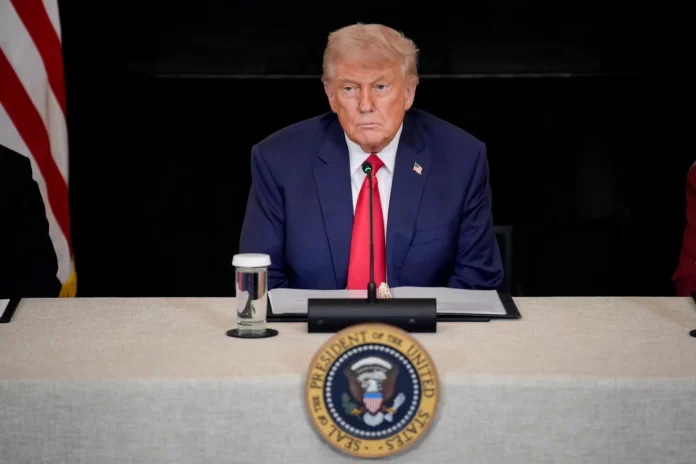The United States will impose a 20% tariff on many Vietnamese exports—lower than the previously planned 46%—President Donald Trump announced Wednesday, offering a diplomatic reprieve just days ahead of a broader tariff hike on global imports.
Vietnamese goods will now face a 20% levy, while trans-shipments—goods routed through Vietnam but primarily manufactured in third countries like China—will be taxed at 40%. Trump added that Vietnam would, in turn, accept American products with a zero percent tariff.
“It is my Great Honor to announce that I have just made a Trade Deal with the Socialist Republic of Vietnam,” Trump posted on Truth Social following a call with Vietnamese President To Lam.
The deal comes ahead of Trump’s self-imposed July 9 deadline for tariff renegotiations, part of his broader economic strategy to recalibrate U.S. trade relationships. Originally announced in April, the plan called for a 46% tariff on Vietnamese imports, a move that alarmed U.S. businesses reliant on Southeast Asian supply chains.
While specific implementation details on trans-shipment provisions remain unclear, the Vietnamese government confirmed that both sides had agreed on a joint statement to establish a trade framework. Hanoi did not officially confirm the tariff rates mentioned by Trump.
Vietnam also committed to expanding market access for American goods, including large-engine automobiles, as part of the agreement. Trump’s announcement marks one of the few high-level trade breakthroughs his administration has secured in the lead-up to the July 9 tariff hikes.
U.S.-Vietnam trade ties have expanded rapidly since Trump’s first term, when tariffs on Chinese goods prompted American importers to shift sourcing to Vietnam. Since 2018, Vietnamese exports to the U.S. have nearly tripled from under $50 billion to approximately $137 billion in 2024. In contrast, U.S. exports to Vietnam have grown modestly—from less than $10 billion in 2018 to just over $13 billion last year.
Shares of major U.S. apparel and footwear companies—such as Nike, Under Armour, and VF Corp (parent of North Face)—climbed on the news, as Vietnam is a critical hub for textile and footwear manufacturing.
Hanoi’s delegation also urged the U.S. to recognize Vietnam as a market economy and ease export restrictions on high-tech products—longstanding demands that have been previously rebuffed by Washington. The White House and Vietnam’s trade ministry declined further comment.
Trade experts noted the deal’s flexible framework. “Had Trump stuck with 46 percent, much higher than the current tariff on China, Vietnam feared it would be disadvantaged by its competitors especially in Southeast Asia,” said Murray Hiebert of CSIS. “This likely would have dented Vietnam’s trust in the U.S.”
Trump’s April tariff plan triggered a flurry of bilateral talks, with over a dozen countries—including Britain and India—racing to secure exemptions. Britain accepted a 10% tariff on many goods in exchange for trade concessions. Talks with Japan remain stalled, and a truce with China restored limited rare-earth access but left broader disputes unresolved.
Dan Martin, a business adviser at Dezan Shira & Associates, remarked, “‘Transshipping’ is a vague and often politicized term in trade enforcement. How it’s defined and how it’s applied in practice will shape the future of U.S.-Vietnam trade relations.”
The agreement with Vietnam, while short on specifics, offers a strategic win for both sides amid rising tensions with China and Trump’s broader effort to balance trade flows ahead of the U.S. election cycle.




